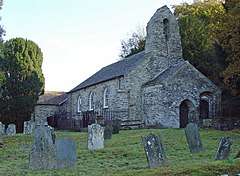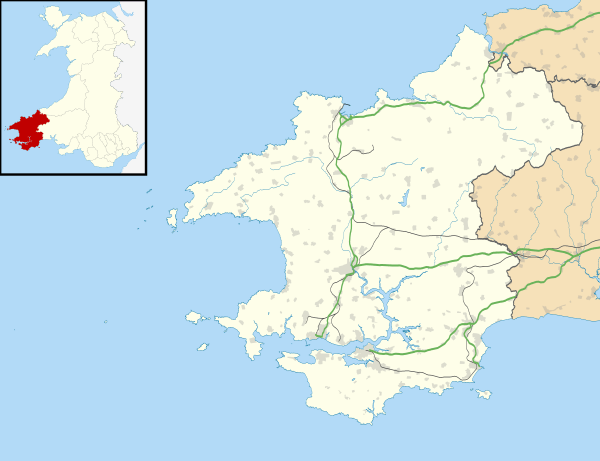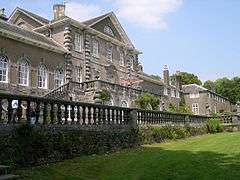Manordeifi
Manordeifi (Welsh: Maenordeifi) is a parish and community in the hundred of Kilgerran, in the northeast corner of Pembrokeshire, Wales. The population of the community in 2001 was 478. It has an elected community council and is part of the Cilgerran electoral ward for the purposes of elections to Pembrokeshire County Council.
| Manordeifi | |
|---|---|
 The old parish church of St. David | |
 Manordeifi Location within Pembrokeshire | |
| Population | 551 (2011)[1] |
| OS grid reference | SN2288242263 |
| Principal area | |
| Ceremonial county | |
| Country | Wales |
| Sovereign state | United Kingdom |
| Post town | Boncath |
| Postcode district | SA37 0 |
| Dialling code | 01239 |
| Police | Dyfed-Powys |
| Fire | Mid and West Wales |
| Ambulance | Welsh |
| UK Parliament | |
In addition to scattered settlement, the parish contains the villages of Abercych and Newchapel (Welsh: Capelnewydd), and many listed buildings and structures.[2]
History
Manordeifi's old parish church, situated in the edge of the River Teifi floodplain at 52.05846°N 4.58557°W, was abandoned in favour of a new church built on the hill top in the nineteenth century. The old church (mainly 13th-14th century) preserves many old features.[3] A coracle hangs in the porch, providing a means of escape during floods.
Manordeifi (as Manerdve) is marked on a 1578 parish map of Pembrokeshire.[4]
The population of the parish was: 745 (1801): 956 (1851): 631 (1901): 602 (1951): 402 (1981). The percentage of Welsh speakers was: 87 (1891): 94 (1931): 74 (1971).
Notable houses
There is an unusually large number of substantial mansions in the parish. These included Clynfyw, Ffynone (or Ffynnonau), Pentre and Castell Malgwyn.[5]
Ffynone

The Ffynone estate at Boncath belonged at one time to the Morgan family of Blaenbwlan, from whom it was purchased by Captain Stephen Colby in 1752. The Ffynone mansion, a Grade I listed building,[6] was designed by architect John Nash and completed in 1799.[7]
It was passed down in the Colby family to John Vaughan Colby, whose wife in 1902 commissioned architect and garden designer Inigo Thomas to improve the house and lay out the terraced gardens. John Vaughan died in 1919 and, having no sons, left the estate to his daughter Aline Margaret, who had married Captain Cecil John Herbert Spence-Jones, son of the Dean of Gloucester, in 1908; the marriage was a notable occasion, reported in great detail and an occasion for local celebration, despite there being no guests at the wedding and no reception owing to the bride's mother's state of health.[8] Spence took the additional surname of Colby by royal licence in 1920 and subsequently sold the property in 1927 to a Glamorgan businessman.[9]
The house, in 20 acres of woodland, was bought and restored from 1987 onwards by Owen Lloyd George, 3rd Earl Lloyd-George of Dwyfor and remains (2013) in the Lloyd George family.
References
- "Community population 2011". Retrieved 17 April 2015.
- "British Listed Buildings: Listed Buildings in Manordeifi, Pembrokeshire, Wales". Retrieved 26 March 2016.
- "Friends of Friendless Churches - Manordeifi". Retrieved 11 January 2018.
- "Penbrok comitat". British Library.
- "Manordeifi Community Council". Retrieved 1 April 2015.
- "Ffynone". Archived from the original on 14 July 2014. Retrieved 12 July 2013.
- Cadw. "Ffynone (Grade I) (11980)". National Historic Assets of Wales. Retrieved 10 February 2020.
- "Marriage of Capt. Cecil Spence-Jones". Gloucester Journal. British Newspaper Archive. 20 June 1908. Retrieved 5 August 2014.
- "National Library of Wales-Ffynone Estate Records". Archives Wales. Archived from the original on 23 May 2012. Retrieved 12 July 2013.
